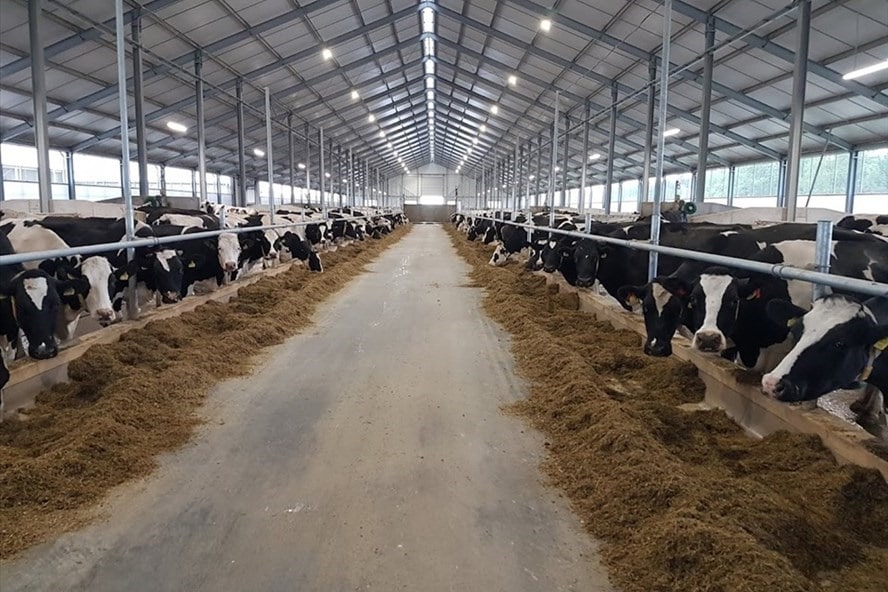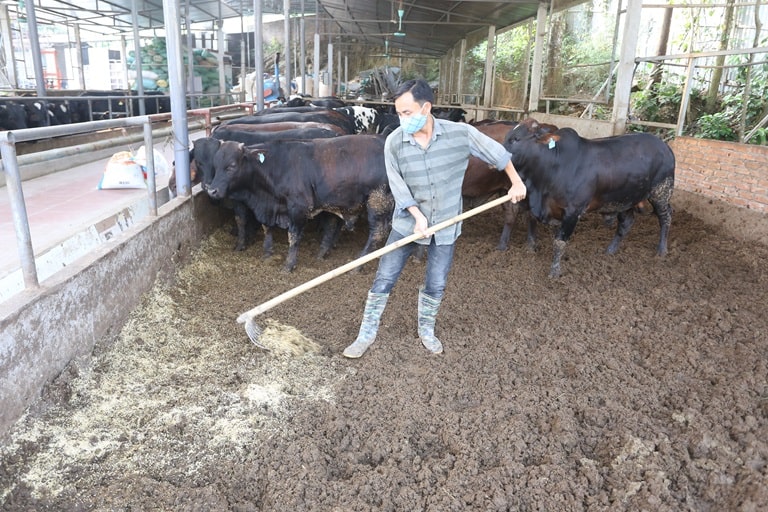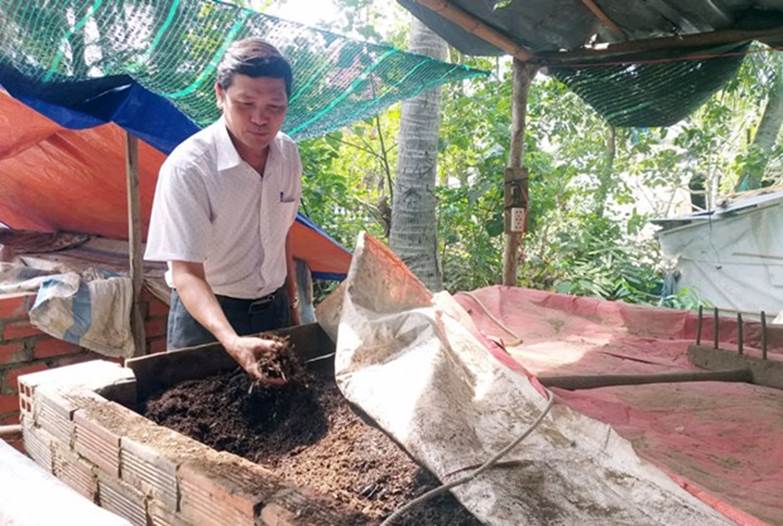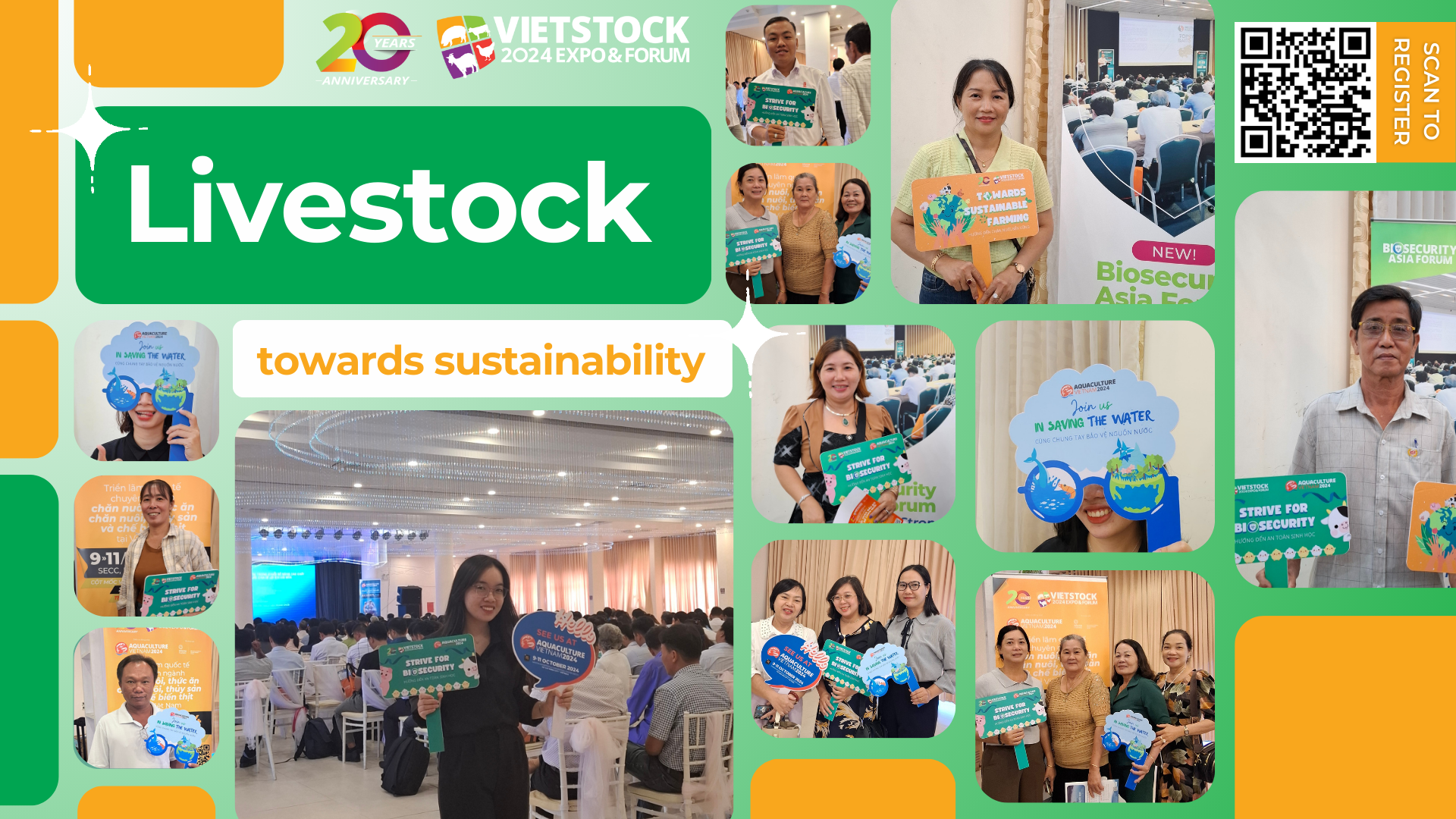How to Produce Organic Fertilizer from Cattle Manure
Organic agriculture is increasingly gaining attention from consumers due to its significant benefits for health, the environment, and sustainable development. Among the essential components of organic farming, organic fertilizer plays a crucial role in providing nutrients to crops, thereby improving product quality and protecting ecosystems.

Cattle manure is an abundant and promising raw material for producing high-quality organic fertilizer. This type of fertilizer not only supplies essential nutrients to crops but also improves soil structure, enhances water retention, and reduces erosion.
This article provides a detailed guide on the process of producing and using organic fertilizer from cattle manure and shares the practical benefits this fertilizer brings.
What is Organic Fertilizer from Cattle Manure?

Organic fertilizer made from cattle manure is produced through the composting process of manure combined with straw, ash, and rice husks, along with biological agents. This organic fertilizer is increasingly favoured in agriculture due to its superior advantages over chemical fertilizers.
Composition:
- Cattle Manure: Provides essential nutrients for crops, such as nitrogen, phosphorus, potassium, and beneficial microorganisms for the soil.
- Straw, Ash, Rice Husks: This helps create a porous texture for the fertilizer and adds organic matter to the soil.
- Biological Agents: Accelerate the decomposition process and make the nutrients in the fertilizer more readily available to crops.
Advantages:
- Nutrient Supply: Organic fertilizer from cattle manure provides a balanced supply of essential nutrients, promoting healthy plant growth, increased yield, and higher-quality produce.
- Improved Soil Structure: Organic fertilizer enhances soil fertility, improves soil structure, increases water retention, and reduces erosion.
- Environmental Protection: Organic fertilizer reduces environmental pollution by minimizing the use of chemical fertilizers.
- Enhanced Plant Resistance: Organic fertilizer helps plants develop a strong root system, enhancing resistance to pests and diseases.
- Health Safety: Crops grown with organic fertilizer are safer and more nutritious than those grown with chemical fertilizers.
Usage:
- Pre-planting Application: Apply before sowing or planting.
- Growth Stage Application: Apply during the growth and development stages of the plant.
- The dosage and method of application depend on the type of crop, its growth stage, and soil conditions.
Organic fertilizer made from cattle manure is a smart choice for farmers looking to achieve sustainable agriculture, protect the environment, and produce safe food.
Producing Organic Fertilizer from Cattle Manure
Step 1: Prepare Materials
- Fresh Cattle Manure: Choose manure from healthy cattle that have been fed adequately and have not been treated with veterinary drugs recently. The manure should be collected and pre-treated to remove waste, branches, metal objects, etc.
- Straw, Ash, Rice Husks, Sawdust, and Coconut Fiber: These materials help create a porous texture for the compost pile and add organic matter to the fertilizer.
- Biological Agents: Purchase reputable biological agents suitable for producing organic fertilizer from cattle manure. These agents supply beneficial microorganisms that speed up the decomposition process and produce high-quality fertilizer.
- Water: Helps maintain appropriate moisture levels in the compost pile, creating ideal conditions for microbial activity

Material Ratio:
- Fresh Cattle Manure: 50%
- Straw, Ash, Rice Husks, Sawdust, Coconut Fiber: 30%
- Biological Agents: 1%
- Water: 19%
Notes:
- The material ratio can be adjusted based on specific conditions.
- Use clean materials free from harmful chemicals.
Step 2: Process the Materials
There are two main materials that need to be processed before composting: cattle manure and agricultural by-products
Cattle Manure:
- Cattle manure should be processed to remove waste, branches, metal objects, etc., before being chopped or ground.
- The manure can be dried before chopping or grinding to reduce moisture content and facilitate processing.
- Chop or grind the manure into fine particles to increase the surface area exposed to microorganisms, speeding up decomposition and producing high-quality fertilizer.
Straw, Ash, Rice Husks, Sawdust, Coconut Fiber:
- Chop or grind these materials to create a porous texture for the compost pile.
- The size of these materials should be less than 2 cm to facilitate decomposition.
- These materials can be mixed before chopping or grinding
Step 3: Composting
Choose a well-ventilated, shaded area to avoid direct sunlight and rain, with good drainage. Avoid composting near water sources or residential areas to minimise odors. Follow these steps:
Layering:
- Start with a 10 cm layer of straw/ash/rice husks/sawdust/coconut fiber.
- Add a 20 cm layer of cattle manure on top.
- Repeat these layers until the compost pile is complete.
- The top layer should be a 10 cm layer of straw/ash/rice husks/sawdust/coconut fiber.
Watering:
- Evenly water the compost pile to maintain 60-70% moisture.
- Use a hose or watering can for watering.
- Water in the morning or late afternoon to avoid rapid evaporation
Covering:
- Use tarpaulin or plastic sheets to cover the compost pile.
- Secure the cover to prevent wind from getting in.
- Covering helps retain heat and moisture, creating ideal conditions for microbial activity.
Monitoring and Adjusting:
- Regularly check the moisture and temperature of the compost pile.
- If the moisture is too low, add more water.
- If the moisture is too high, open the cover to allow ventilation.
- The ideal temperature for composting is 30-40°C.
- Turn the compost pile every 7-10 days to promote effective microbial activity.
Step 4: Final Product
After 3-4 months, the organic fertilizer made from cattle manure will be ready for use. Indicators of mature compost include:
- Color: The fertilizer turns dark brown instead of the initial yellow-brown of the raw materials.
- Texture: The fertilizer becomes crumbly and easy to break apart by hand.
- Smell: The unpleasant odor of fresh manure disappears, replaced by a mild, earthy scent.
- Temperature: The compost pile’s temperature has decreased compared to the initial stages.

At this point, the organic fertilizer can be used directly or screened to remove impurities before application. Screening helps remove branches, clumps of soil, stones, etc., making the fertilizer easier to apply to crops and reducing the risk of damaging plant roots..
Using Organic Fertilizer from Cattle Manure:
- Pre-planting Application: Apply before sowing or planting.
- Growth Stage Application: Apply during the growth and development stages of the plant.
- The dosage and method of application depend on the type of crop, its growth stage, and soil conditions.
Organic fertilizer from cattle manure is a high-quality, environmentally friendly option that provides numerous benefits to crops. Use this fertilizer to contribute to producing safe and nutritious products for consumers.
Conclusion
Organic fertilizer derived from cattle manure is a valuable asset for sustainable agriculture. It offers numerous benefits for crops, the environment, and human health.
By adopting methods for producing organic fertilizer from cattle manure, farmers can contribute to environmental protection and enhance the quality of their agricultural products.
To delve deeper into sustainable livestock and aquaculture practices, consider attending the Vietstock & Aquaculture Vietnam 2024. This event is a crucial gathering for industry professionals and businesses seeking to stay updated on the latest technological advancements.

Vietstock 2024 and Aquaculture Vietnam 2024 offer a comprehensive platform for networking, trade, and collaboration within the livestock and aquaculture sectors.
Biosecurity Asia Forum: a new activity of this year’s edition. The forum focuses on directions, methods, and implementation of biosecurity – a core value for sustainable development in the livestock industry.
Don’t miss the opportunity to join Vietstock 2024 and Aquaculture Vietnam 2024 and contribute to the sustainability of the livestock and aquaculture industries.
Register now: https://ers-vn.informa-info.com/vsv24
Contact Us:
- Exhibiting: Ms. Sophie Nguyen – [email protected]
- Group Delegation Support: Ms. Phuong – [email protected]
- Marcom Support: Ms. Anita Pham – [email protected]




